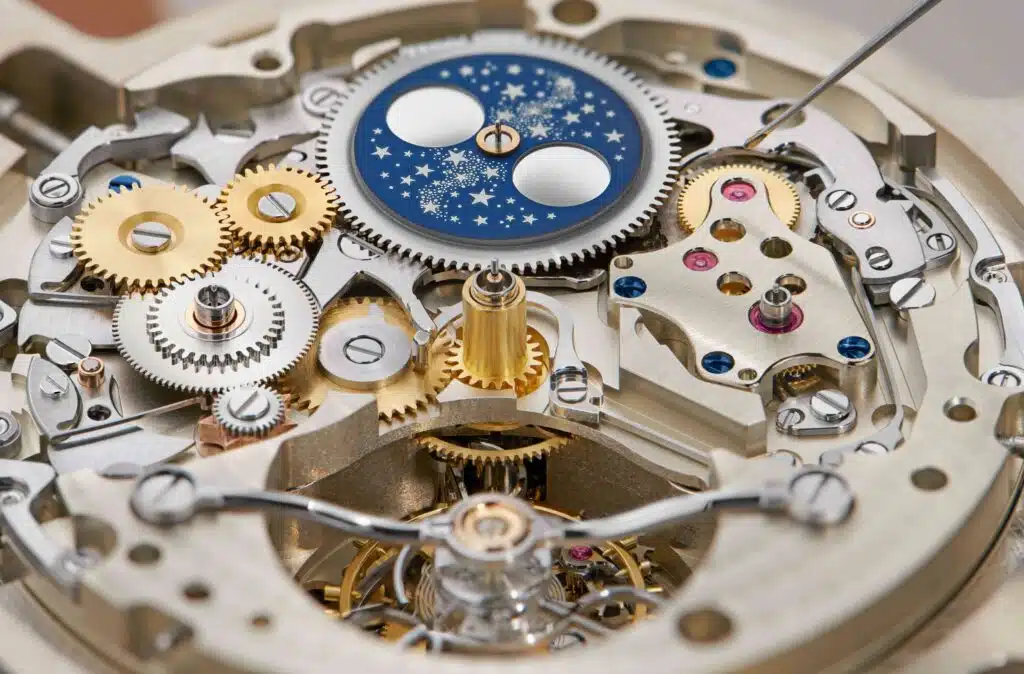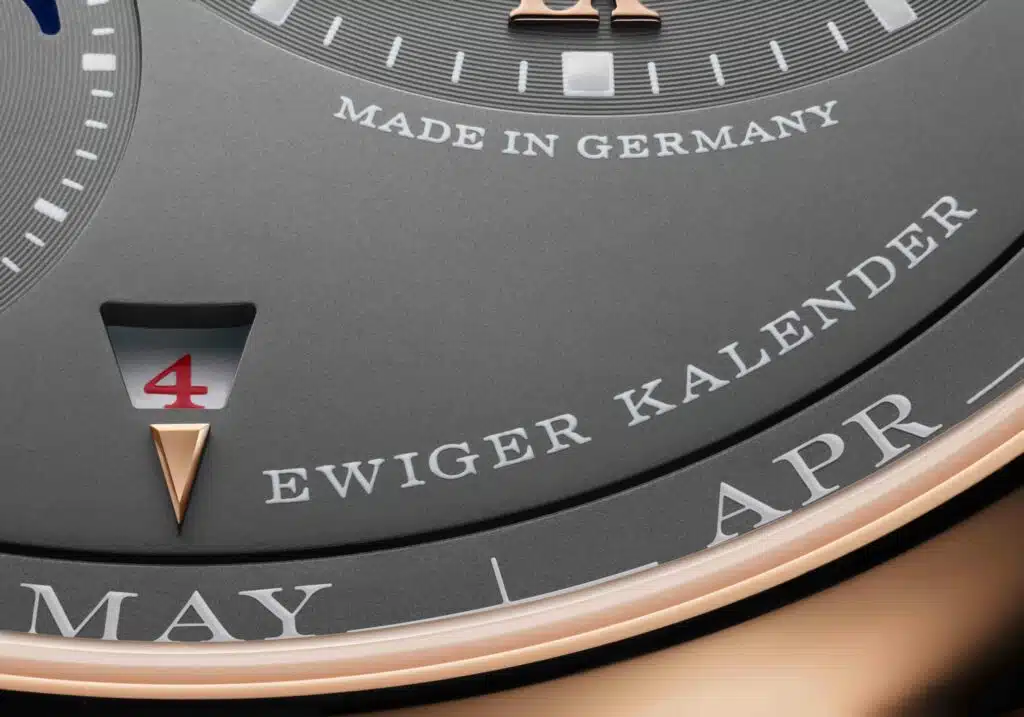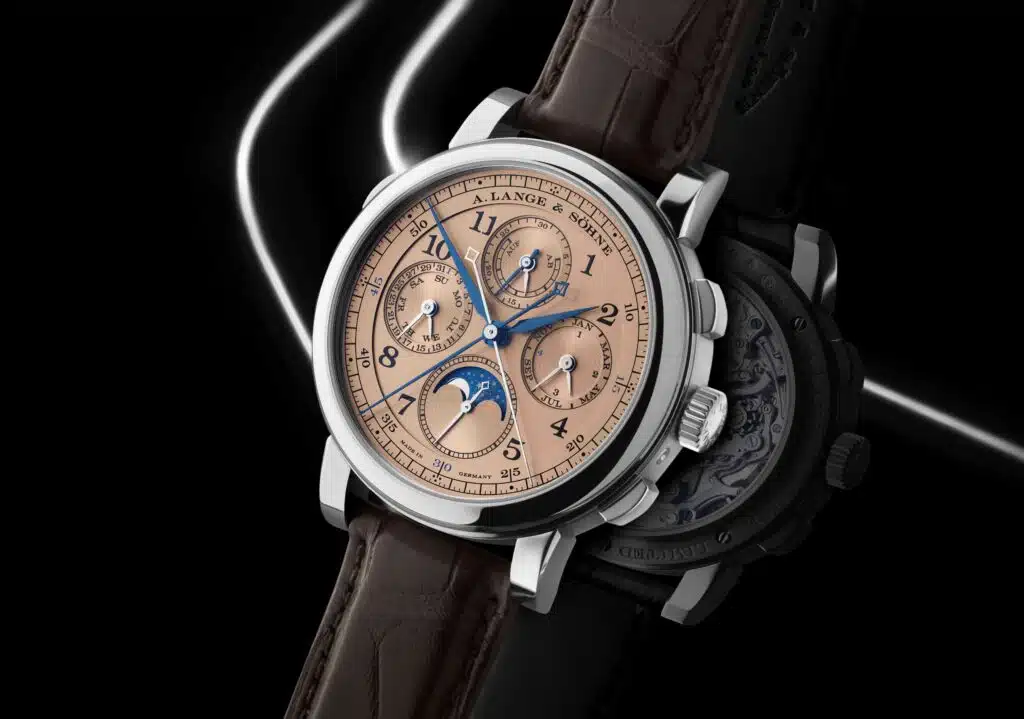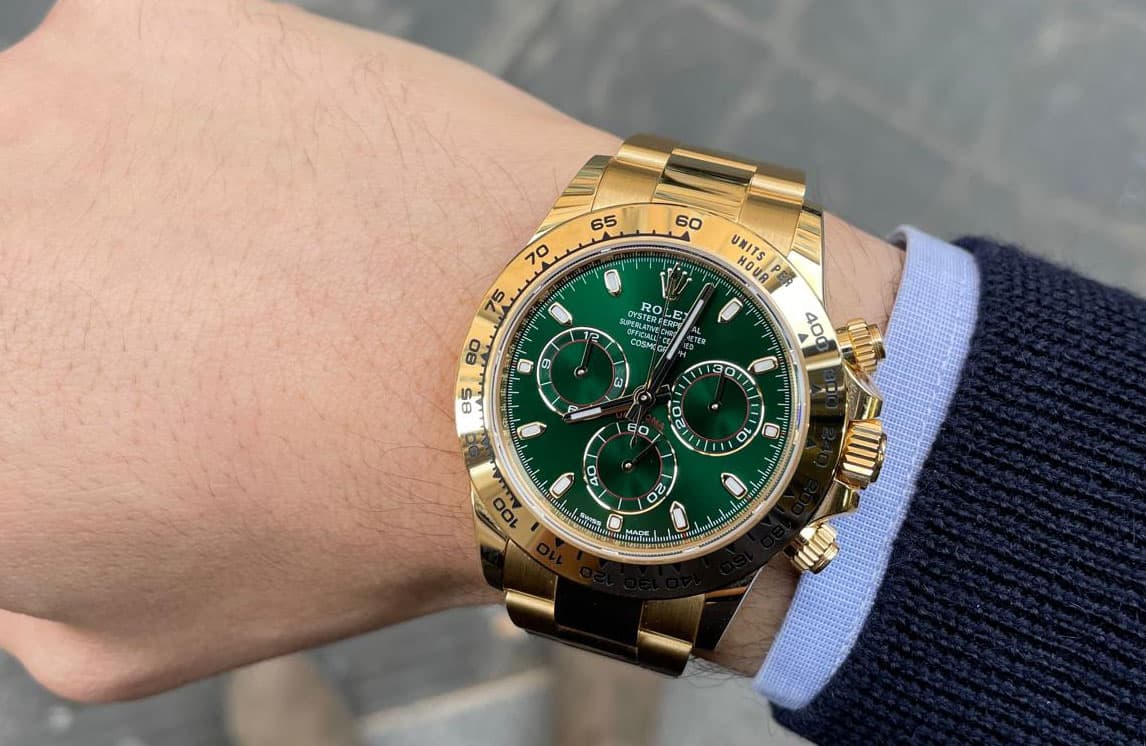
February 29, 2024 marks this date again: once every four years, we have an extra day in our calendar. Since 2001, A.Lange & Söhne has launched 9 timepieces that consider this "event." And there's more: the Saxon Manufacture has developed a different technical approach to the perpetual calendar mechanism.

The year 2024 is a leap year, a year in which the difference between the perpetual calendar and the annual calendar becomes apparent. The expectation begins on New Year's Eve when, at the stroke of midnight, the leap year indication changes from 3 to 4.
From then on, it takes 59 days before the perpetual calendar can finally demonstrate what it is capable of. It will correctly reproduce the transition from February 28 to February 29, but then it will also directly change to March 1 at midnight on leap day. This may sound simple, but it is a formidable technical challenge, requiring the development of a mechanical program capable of mapping the different durations of all 48 months through the entire four-year cycle.
The classical way
Classically, this task is performed by a program wheel with 48 notches and steps, corresponding to the different durations of the 48 months in the four-year cycle of three regular years and one leap year.
While the wheel turns only once every four years, the notches and steps are detected by a lever. The rule is that the deeper the notch, the sooner the mechanism moves to the first day of the next month. The deepest notches correspond to the four months of February. At a closer look, one of them is slightly shallower.
This marks February of the leap year with an additional calendar day. The mechanism recognizes the different lengths of months for an entire century. The correction is needed only in the secular years 2100, 2200 and 2300, which according to the Gregorian calendar will not be leap years.
Seven out of nine sophisticated A.Lange & Söhne timepieces with perpetual calendar and a wide range of other complications depend on this traditional principle. The LANGE 1 TOURBILLON PERPETUAL CALENDAR and the LANGE 1 PERPETUAL CALENDAR, in each case, are based on a completely new approach.

The innovative way
Innovating a perpetual calendar is difficult. It is one of the most traditional complications dating back to the mid-1700s, when English watchmaker Thomas Mudge created the first watch with a perpetual calendar. The first Lange pocket watches with a perpetual calendar and moon phase indications date back to the late 19th century.
It seems, therefore, that everything has already been invented... Undaunted, the engineers of A.Lange & Söhne calibres have taken a new path in the design of perpetual calendars.
The development of the LANGE 1 TOURBILLON PERPETUAL CALENDAR, launched in 2012, confronted them with the nearly impossible task of harmoniously integrating the multitude of calendar indications into the LANGE 1's dial architecture without compromising the asymmetrical arrangement of non-overlapping indications. Its key element is the patented peripheral month ring, which constitutes an entirely new type of month indication. It replaces the traditional mechanism in which the month is advanced by a notched program wheel. However, the innovative solution imposed new challenges on the caliber designers. They had to find a way to make the large ring instantly rotate 30 degrees during the transition to the new month.
This increment is about four times longer than that of the very light and much smaller program wheel. Therefore, an attempt was made to find an alternative drive solution that could advance the ring of months with such a large progression and an innovative way to sample the duration of each month. The choice to display the twelve months on the outer ring added complication to an architecture that has its own natural original complication. The mechanism requires, thus, a recoding of the relative information: the ring has 12 recesses of varying depth at its bottom.
A deeper recess implies a shorter month and, therefore, a quicker snap to the next month. This device is patented to manage the rotation of the peripheral ring of months with an engagement wheel dependent on a cam with differentiated recesses "controlled" by a special feeler. In February, a lever extender makes contact with the cam under the leap year disk. This tells the mechanism whether it is a common year with only 28 days in February or a leap year with 29 days. This innovative realization of the eponymous complication is also used in the LANGE 1 PERPETUAL CALENDAR, which was introduced in 2021.
